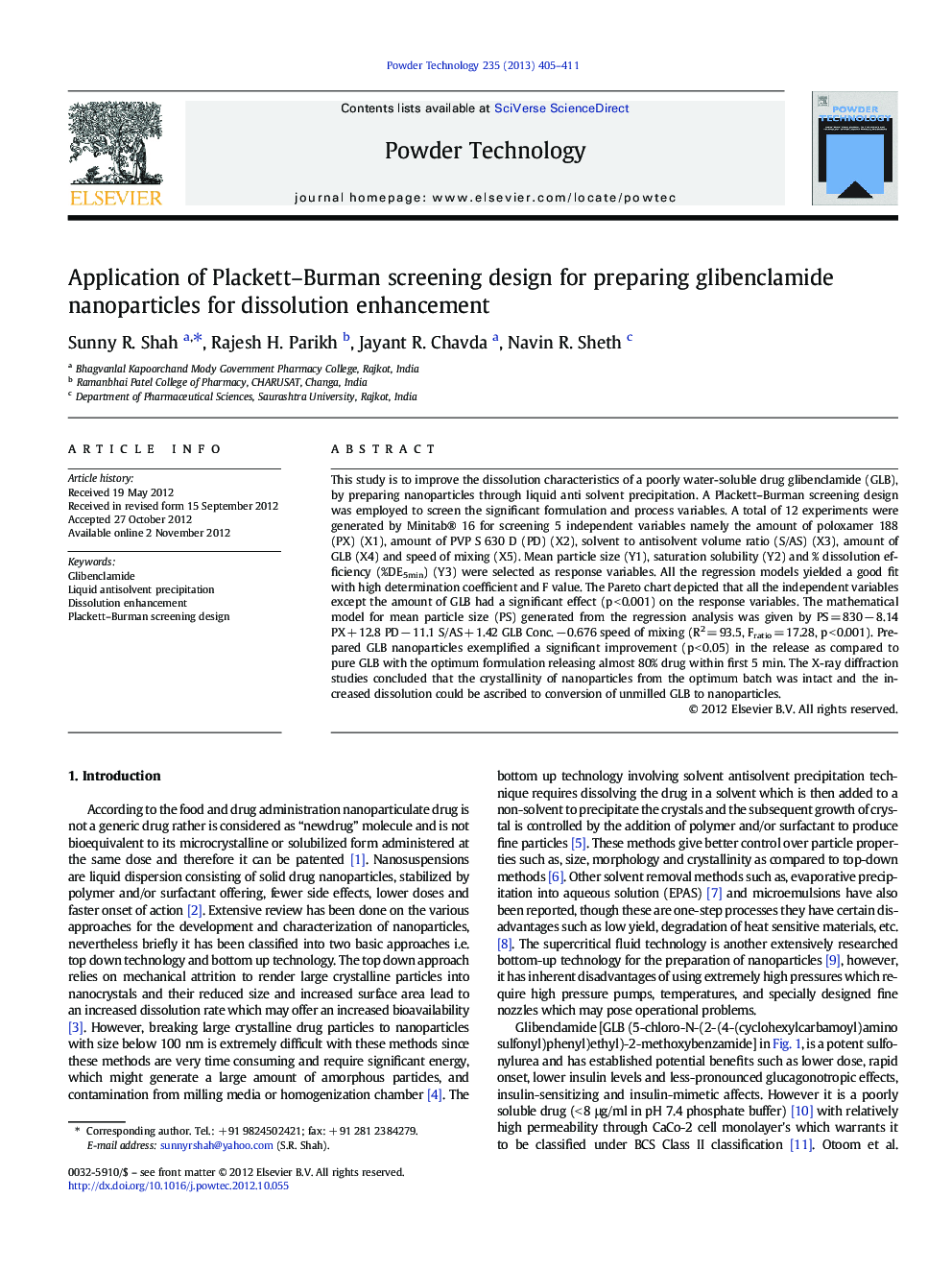| Article ID | Journal | Published Year | Pages | File Type |
|---|---|---|---|---|
| 236658 | Powder Technology | 2013 | 7 Pages |
This study is to improve the dissolution characteristics of a poorly water-soluble drug glibenclamide (GLB), by preparing nanoparticles through liquid anti solvent precipitation. A Plackett–Burman screening design was employed to screen the significant formulation and process variables. A total of 12 experiments were generated by Minitab® 16 for screening 5 independent variables namely the amount of poloxamer 188 (PX) (X1), amount of PVP S 630 D (PD) (X2), solvent to antisolvent volume ratio (S/AS) (X3), amount of GLB (X4) and speed of mixing (X5). Mean particle size (Y1), saturation solubility (Y2) and % dissolution efficiency (%DE5min) (Y3) were selected as response variables. All the regression models yielded a good fit with high determination coefficient and F value. The Pareto chart depicted that all the independent variables except the amount of GLB had a significant effect (p < 0.001) on the response variables. The mathematical model for mean particle size (PS) generated from the regression analysis was given by PS = 830 − 8.14 PX + 12.8 PD − 11.1 S/AS + 1.42 GLB Conc. − 0.676 speed of mixing (R2 = 93.5, Fratio = 17.28, p < 0.001). Prepared GLB nanoparticles exemplified a significant improvement (p < 0.05) in the release as compared to pure GLB with the optimum formulation releasing almost 80% drug within first 5 min. The X-ray diffraction studies concluded that the crystallinity of nanoparticles from the optimum batch was intact and the increased dissolution could be ascribed to conversion of unmilled GLB to nanoparticles.
Graphical abstractPlackett-Burman screening design was applied to prepare glibenclamide nanoparticles to improve its dissolution characteristics. Pareto chart revealed that all the predetermined independent variables except drug concentration had a significant effect on the dependent variables. The optimum batch of nanoparticles showed a mean particle size of 279 nm and released almost 80 % drug within first 5 min which is significantly (p < 0.001) higher as compared to pure drug which showed 8.5 % dissolution.Figure optionsDownload full-size imageDownload as PowerPoint slideHighlights► Glibenclamide nanoparticles have been prepared using liquid anti solvent precipitation. ► Formulation and process variables were screened by Plackett–Burman screening design. ► Optimum formulation had crystalline drug and released 80% drug within 5 min. ► Plackett–Burman screening design helped in understanding the mechanics of process. ► The improved dissolution of glibenclamide might improve patient compliance.
